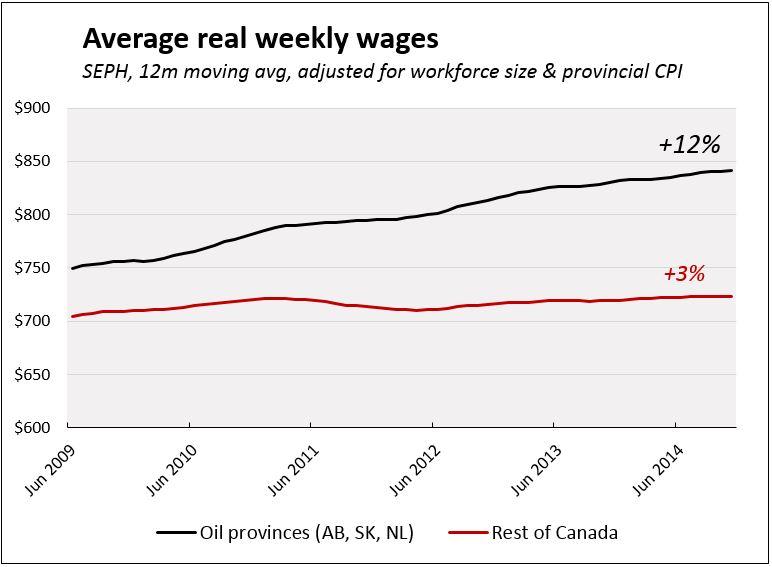Are wages in Canada stagnant or growing? The short answer is another question: do you live in an oil boom province? There’s a fairly common meme that while Canada, like the US, saw wages stagnate, this is no longer true. Indeed, overall wage growth has picked up since the last crisis.
“Stagnant real wages” is yet another US talking point imported into Canada without checking the data pic.twitter.com/Z6fg2G4uMZ
— Stephen Gordon (@stephenfgordon) December 29, 2014
The baggage that comes with this meme is that we here in reasonable, responsible Canada shouldn’t care about all those things that the US and European lefts are alarming about: no need to worry about inequality, austerity doesn’t concern us and so on. But while it’s a truism that we shouldn’t wholesale import analysis of another economy into the Canadian context, we are not immune to global trends. Yes, the US is a large economy with huge internal markets and this is a big difference; however, as a small, open economy, we cannot escape larger trends, especially with ever greater economic integration through free trade, freer movement of capital and international financialization.
One example of a phenomenon we haven’t really escaped is precisely wage stagnation. Here is a pair of charts showing wage growth since the end of the last recession in June 2009. They separate the three oil boom provinces (Alberta, Saskatchewan and Newfoundland and Labrador) from the rest of Canada. The first chart is from the survey of employers and shows the change in average real weekly wages . (It and all others are smoothed out to show the underlying trend, adjusted by provincial CPI and weighted by the size of the workforce in each province.)
